Despite being isolated by neighboring governments, Iran has managed to maintain a say in many of the region’s developments through its funding of terrorist groups and Shiite militias, writes Daniel Byman. This piece originally appeared in the Washington Post.
The U.S. drone strike that killed Maj. Gen. Qasem Soleimani, the head of the paramilitary Quds Force of the Islamic Revolutionary Guard Corps (IRGC), highlighted the centrality of support for terrorist, insurgent and other substate groups in Iran’s foreign policy. The Quds Force helps arm, train and otherwise support numerous insurgent and rebel groups in Afghanistan, Iraq, Syria, Yemen, the Palestinian territories and other areas, and its activities are part of why the United States has long labeled Iran the “world’s leading sponsor of terrorism.”
Support for such groups has been an important part of Iran’s foreign policy since the 1979 Islamic Revolution. Such relationships have advanced numerous Iranian interests, undermined its enemies, helped Iran deter adversaries and made the country a global player. At the same time, these ties are camouflage for Iran’s weakness. Even more important, the U.S. and regional response to Iran’s support for various militant groups has contributed to Tehran’s outcast status, decreasing the country’s economic power and diplomatic clout.
The benefits of supporting militants
Iran supports a wide variety of parastatal and nonstate groups, and terms such as “terrorism,” “insurgent” and other labels often fall short. In 1992, a suicide bomber from an Iran-backed terrorist group blew up the Israeli Embassy in Argentina, killing 29 civilians. In other cases, Iran backs groups better described as rebels. In Yemen, Iran supports the Houthis, who control the country’s capital and otherwise claim to be the government, although the United States does not recognize them as such.
In Iraq, Iran worked with a wide spectrum of nonstate groups, including “special groups” that targeted the United States. These same groups also later worked with the Iraqi government (and indirectly with U.S. forces) to go after the Islamic State. In Syria, Tehran has orchestrated the activities of thousands of Shiite foreigners who formed pro-regime militias and has done so in cooperation with the Syrian government.
Some organizations, like the Lebanese Hezbollah, are all of the above. In its more than 30 years of fighting Israel and other enemies, Hezbollah has used terrorism to attack civilian Israeli targets, conducted guerrilla war against the Israeli military, used advanced conventional weapons such as anti-ship cruise missiles, run hospitals and schools, and joined Lebanon’s government. No single label suffices.
The particular enemies have changed over the years, but the drivers are similar. Supporting militant groups is a way to weaken governments Iran opposes, undermine the position of regional rivals such as Saudi Arabia, or otherwise expand its influence.
Iran began working with terrorist groups immediately after the revolution because it shared their ideology and ambitions, seeking to export its revolution to neighboring countries. Tehran tried to promote unrest in Iraq, backed a coup in Bahrain in 1981, supported insurgent groups in Yemen and Afghanistan, and supported anti-government rebels in Kuwait, Saudi Arabia and other countries. Iran’s most successful export was the Lebanese Hezbollah, which Tehran nurtured after the 1982 Israeli invasion and which grew to be a formidable military and political force, as well as part of Iran’s global terrorist network.
Support for such groups is a way for Tehran to project power. Tehran’s ties to Hamas, Hezbollah and Palestinian Islamic Jihad made it a player in the Israel-Palestinian dispute. Its support for terrorist attacks against Israel in the 1990s helped derail the peace process. Iran has had an on-again, off-again relationship with Hamas, but ties to Palestinian groups in particular bridge the Shiite-Sunni divide and give Iran revolutionary credibility.
The threat of terrorism also acts as a form of deterrence. Because Iran has demonstrated the ability to attack U.S. and Israeli bases, embassies and other facilities, these and other enemies must think twice before striking Iran. Both Israel and the United States have used cyberattacks on Iran, struck at its personnel (such as Soleimani, but also numerous lower-level strikes by Israel) and otherwise continued to act — but always with the recognition that Iran can push back hard.
All of this can be done at relatively low cost. Support for terrorist groups and militias costs Tehran hundreds of millions of dollars or even low billions, depending on which groups are included and what methodologies are used, but the cost of conventional military forces is far higher.
Tehran’s intervention was a game-changer for the Syrian regime in the civil war there, helping preserve President Bashar al-Assad when he was hanging by a thread. Much of Iran’s intervention, however, was done via the Lebanese Hezbollah and a range of Afghan, Iraqi and Pakistani Shiite groups. They did the bulk of the fighting and dying.
Tehran’s intervention makes these groups stronger. In Lebanon, for example, Hezbollah is by far the most capable armed force. In 2006, the group fought a bitter war with Israel, inflicting many casualties on the doughty Israeli military and continuing its rocket attacks throughout the conflict. In Yemen, the Houthis now use medium-range missiles to attack Saudi Arabia, while in Iraq, the Iran-backed groups used shaped charges that can penetrate U.S. armored vehicles, greatly increasing the threat they pose.
But there are costs to such activities
Yet for all these benefits, such support has many costs for Iran.
Part of why Iran backs these groups is because Tehran’s economic and military power is weak. Despite having big forces on paper, Iran has a small military budget, and years of U.S. pressure have limited foreign arms sales to the country. Working unconventionally via the IRGC is a necessity, not a choice. Similarly, Iran’s economy is weak, giving it little clout. As a result, in relative terms, the low billions Iran spends in support of militant groups is costly because its economy cannot easily support even this small burden.
Tehran also faces a sectarian trap: Although it presents itself as a Muslim, not a Shiite, power, Saudi Arabia and other countries have successfully portrayed it as a minority voice within Islam, and when sectarian conflict flared in Iraq and then Syria, Tehran’s broader reputation suffered.
Perhaps most important, support for terrorist and rebel groups creates dangerous spirals for Iran. By backing even a weak group, Iran is threatening the legitimacy of another government, which not surprisingly reacts with hostility. With the exception of Syria, Iran has no true allies, and many countries see it as a threat.
The United States looks at Iranian-supported terrorism and attacks against U.S. forces and the Embassy in Lebanon in 1983, against the Khobar Towers facility in 1996, against U.S. forces in Iraq after the 2003 U.S. invasion and occupation, and sees Iran as an enemy. For most of the country’s history, Iran has suffered from some form of sanctions, and at times (including today) these have been crushing. The resulting diplomatic and economic pressure have massive costs for Iran’s power and for ordinary Iranians.
Aggressive attempts to delegitimize and overthrow neighboring governments can create new enemies or provoke unintended responses. Immediately after the revolution, Tehran worked with various Shiite and Kurdish groups to weaken Saddam Hussein’s regime in Iraq. Although the backing of the Iraqi Shiite groups was in part due to a shared religious ideology, its support of Iraq’s Kurds was out of a cold realpolitik calculus — Iran was simultaneously suppressing a massive Kurdish revolt at home.
Tehran also conducted international terrorist attacks to undermine these government and European supporters of Iraq such as France. The Iraqi invasion that followed, however, became an existential threat. Its overreach over the past few weeks could still trigger a similar threat to the regime.
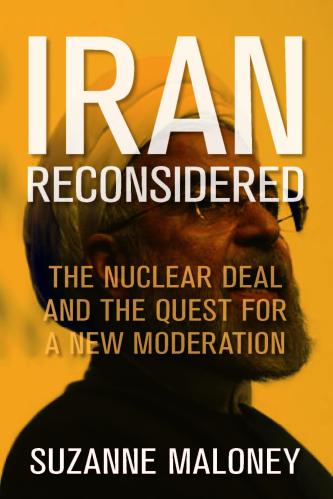
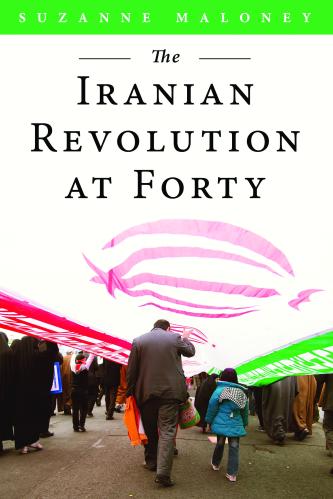

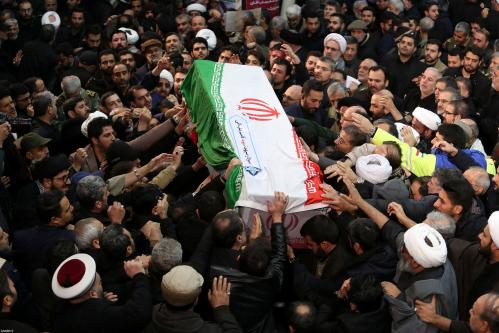
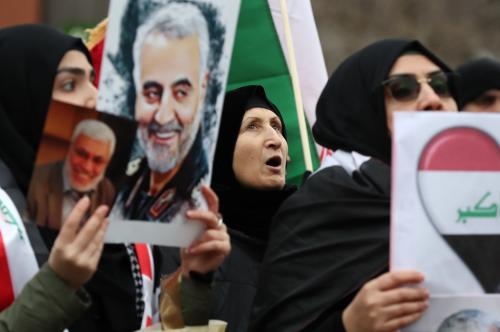
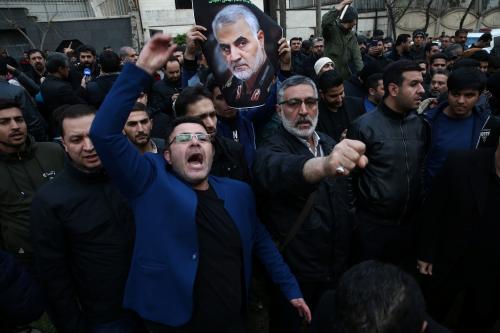

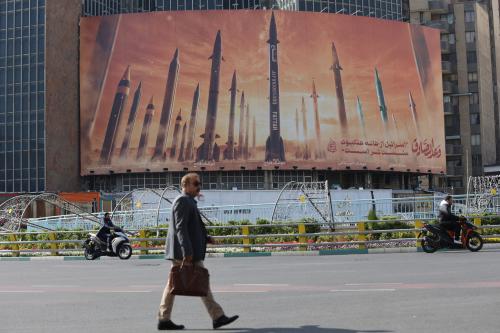
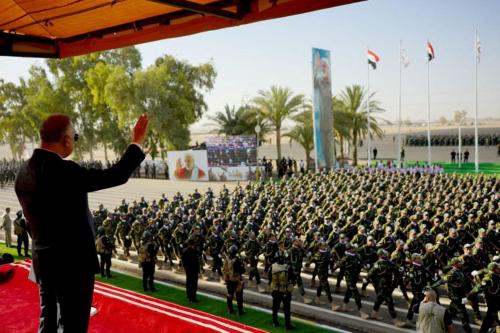
Commentary
How terrorism helps — and hurts — Iran
January 6, 2020